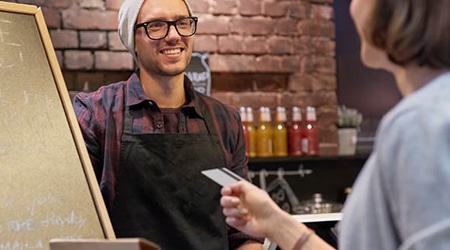
- The Savvy Promise
At Savvy, our mission is to empower you to make informed financial choices. While we maintain stringent editorial standards, this article may include mentions of products offered by our partners. Here’s how we generate income.
Shopping and banking online have made it convenient to avoid standing in a queue, but it has also ushered in an error where your credit card information can be stolen in one fell swoop. Looking beyond the convenience that online shopping and banking bring you by using these seven handy tips can help you protect yourself.
Is the website secure?
Hackers have become in advance when it comes to creating websites that look legitimate to snatch up your information. According to the Australian Bureau of statistics, 6.09 million Aussies were impacted by cybercrime in 2017. This is 1 in 4 Australians that had their information stolen. Checking the credibility of the site usually requires checking things such as the website URL that must start with “https:” and a feature of a small grey padlock that can be usually found in the top left-hand corner.
The rise of fake apps
Social media has also made it easier for hackers to get quicker access to your personal information. The small personality competitions or challenges that people play on social media platforms such as Facebook require your personal information that can land in the wrong hands. Banks have also joined the apps sphere by creating apps that will make banking more convenient. However, there are a handful of fake apps that pose as the real deal. Checking who has created the app and what is required to use it can tell you whether it is real or fake.
Create a strong password
You may feel like many websites require that you put in a capital letter, numbers, an emoji, and the answer to what E=MC2 really means as your password, it does come in handy to create a password that is strong yet easy to remember. Hackers have technology that can guess billions of passwords within seconds and if you have a password that is easy to crack, they could soon be sauntering off with all your information. Always keep in mind to create something that is not easy to guess, but not to complex that you forget.
Be careful about using public wifi
Before punching in your credit card details online, double check the connection that you are using to do this. Check with staff whether this is the ‘official’ hotspot before connecting. Avoid using public wifi to do online banking, shopping, or to send confidential emails. If you are in a hurry to get this done, you will be better off by going to a physical store or branch.
Keep your software updated
Keeping the software on both your phone or computer is essential to keeping your devices protected from security threats. Sticking to the updates that are required by your devices can come in handy later on when you access online sites. Always verifying if the site is legitimate. You can consider also having a credit card that is specifically used for online transactions which will make it easier to track any suspicious behaviour.
Did you find this page helpful?
This guide provides general information and does not consider your individual needs, finances or objectives. We do not make any recommendation or suggestion about which product is best for you based on your specific situation and we do not compare all companies in the market, or all products offered by all companies. It’s always important to consider whether professional financial, legal or taxation advice is appropriate for you before choosing or purchasing a financial product.
The content on our website is produced by experts in the field of finance and reviewed as part of our editorial guidelines. We endeavour to keep all information across our site updated with accurate information.








